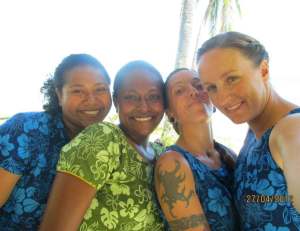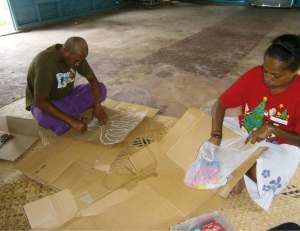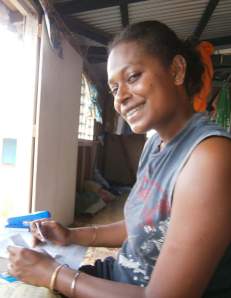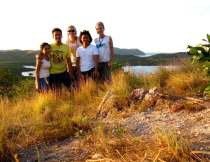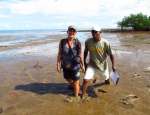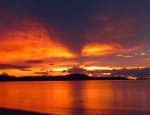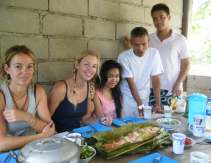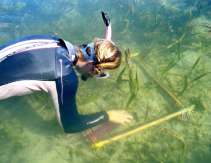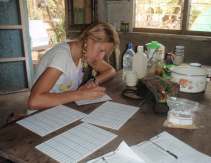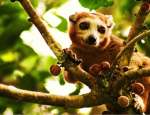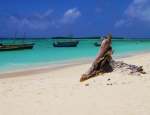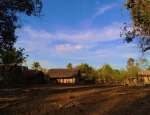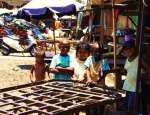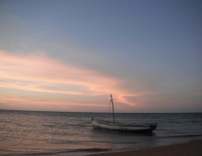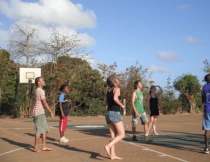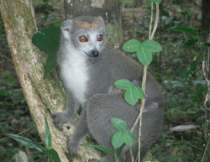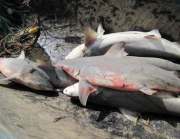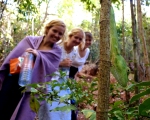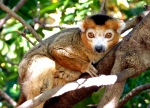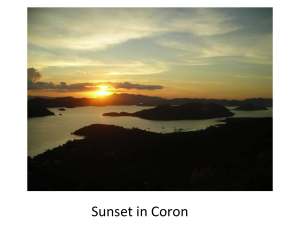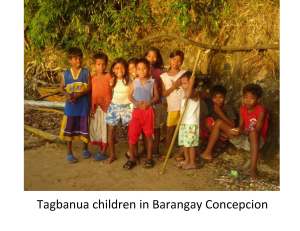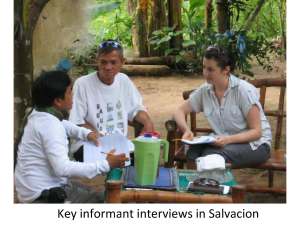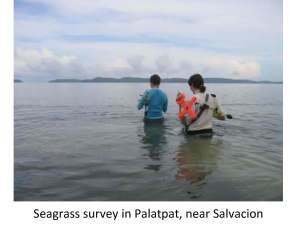The 6 weeks spent with C3 as a research assistant on the island of Kia, has been an experience of a lifetime. Not only has the experience molded me into better conservationist I enjoyed every minute of it thoroughly.
As a Fijian myself, going to work on another island has opened my eyes to another way of living and shown me firsthand the struggles people go through to survive on the island. Getting to know their culture and their way of living has made me see life with a different perspective. The first week of my stay on the island was challenging as the only source of fresh water is rainwater. I have learnt a lot about water conserving techniques – we had to use water wisely on the island as the water tanks only gets filled up when there’s rain. The biggest challenge I found was to actually put myself into their shoes and experiencing their way of living, their way of thinking and all the challenges that they had to come across.
One particular thing that amazes me still is the fact that they go fishing everyday except on Sundays, and seem to have an endless supply of fish and this is tied closely to the people’s belief and religion, which is very highly regarded. With the presence of C3 on the island, the locals are beginning to take into account the risk of running out of fish in the near future and the kids have also played a vital role in getting the message across on the importance of conserving the environment. As they say that learning starts from grassroots level, I personally believe that the island of Kia has a bright future considering the kids enthusiasm for conserving nature.
By assisting with raw data collection on the island I’ve not only got to know the locals better but also gotten to see firsthand their passion for the environment and how they are adapting well to the conservation programme.
The locals were so helpful in many different ways. An exciting experience I’ll never ever forget was a fishing trip we took one evening, it was long hours and hard work but exciting and an experience I’ll never forget.
The level of socializing and hospitality showed by the locals themselves is what I can’t get over and just days within arriving on the island I felt right at home. I’ve been on many fieldtrips with my geography class in University, but nothing can compare to the experience I had on Kia and I’ve made remarkable friends and families on the island. If given another chance to go work for C3 again on the island, I would definitely grab a hold of it! I think that C3 has not only given the opportunity of a lifetime experience to volunteers like myself but is also helping the locals to conserving their environment and natural resources.
As a final year student of the University of the South Pacific, my passion for conservation of our environment has really grown and I believe that with more conservation programmes such as the one running on Kia, our mother earth will be in good hands in the near future.
Vinaka C3!
My three month internship with C3 in the Philippines was one of the most challenging yet valuable experiences in my scientific career. I learned a lot about conservation, particularly in terms of community-based projects, and felt I contributed significantly to an important environmental cause. I gained new skills in the field, in the office, and in day to day life in the Filipino community in which I was immersed. I had some incredible experiences that will remain with me as memories for many years to come.
My internship with C3 provided the chance to learn an approach to conservation that I had read about but in which I had not been involved. My previous experiences working in ecology gave me a range of skills applicable to purely ecosystem-based conservation, many of which proved valuable during C3 field work. My work with C3, however, widened this skill set to include those required for a more holistic community-based approach to conservation. Additionally, prior to my work with C3, my experience with data manipulation and analysis had involved only quantitative data. The community-based methodology employed by C3, however, allowed me to learn valuable skills in the collection and analysis of qualitative data. Because of the multi-disciplinary approach to environmental conservation taken by C3, involving both ecological and sociological aspects, I feel the project in which I was involved has the potential to prove highly successful and sustainable in terms of conservation. I feel fortunate to have been involved in this exciting, important project during its early stages of development, and that my contribution to this research has had a positive impact upon environmental conservation in Busuanga, Palawan.
Although my time in the Philippines was focused on work, I leaped at the opportunity to immerse myself in the Filipino culture around me. I learned as much of the Tagalog language as I could (although this proved difficult as people were always eager to practice their English), and spent a lot of time speaking to local people about their culture, customs, politics, and their social and environmental concerns. Because food is an integral part of most cultures, I embraced the chance to learn the Filipino way of eating, from the farm or the sea to the kitchen. I went fishing with local fishers, waded knee deep through mangrove mud with local women to gather clams and crabs, and accompanied farmers to their family plots to watch rice harvest and to help collect fruits and vegetables. I also spent a lot of time in kitchens throughout Busuanga, cooking, learning, tasting, and asking endless amounts of questions. All these experiences made my internship with C3 richer, by allowing me the chance to learn more deeply about the Filipino way of life, and the social and cultural systems present that either directly or indirectly impact upon the environment.
Madagascar is a country where discoveries wait at every corner. My experience there brought me great enrichment in both professional and personal aspect that I’ll always keep in a special place in my memories. After my bachelor and a field experience inAustralia, I had the chance to be enrolled in a 3 month internship from January to April 2012 with Community Centred Conservation, a NGO that works on marine conservation in Northern Madagascar. The projects I participated in, the great people I worked with brought me so much that I can hardly resume it in words.
Overall these three months I spent eight weeks in the field around Ampasindava village, main entrance point to the Nosy Hara marine park constituted of several islands on the northwest coast of Madagascar. Our work there consisted of socioeconomic surveys to assess the status of the local populations, mangrove forest and coral reef status assessments and educational activities with the Madagascar National Parks (MNP) staff and the scouts from Diego.
Before leaving for the field I spent two weeks in Diego reading scientific paper and acquiring some basic knowledge on the topics we were going to investigate to ensure future surveys would be conducted efficiently.
First of all, the social aspect of the project through interviews with representants of local communities was rewarding in so many ways. Overall it was great to learn how to conduct socioeconomic surveys and I could experience integration in local communities with a high sense of hospitality and get a deep feeling of their livelihoods and issues. I discovered the traditional customs and realized how much conservation is a complex goal. With communities living with scarce comfort and exploiting coastal resources as their only food and money income source, how can we pretend to restrict access to these supplies in behalf of environment preservation? I knew that communities had to be considered in conservation programs but finding myself in the middle of this context made me understand the complexity of balancing human needs and environment protection.
On a more environmental aspect we conducted surveys in mangrove forests and on coral reef. I got used to monitoring techniques that are widely conducted such as the ReefCheck and I improved my general knowledge in mangrove and coral reef ecosystems and specific species. Mangroves are fascinating sites despite the mosquitoes, oysters or mud until the knees that made it quite difficult to conduct our work. Coral reefs were located just in front of our campbase and were amazing. Survey a 100 m long transect either with good visibility or not, the fact of swimming with tropical fish around is priceless. Demanding work like we did during our time in Ampasindava is hard but so worth the effort. The data we collected can be used in many ways and helps to strenghten scientific knowledge of threatened environments.
Finally I assisted in training activities with rangers from Madagascar National Parks on monitoring methodologies for mangrove, coral reef and seagrass ecosystems. Their motivation and enthusiasm in learning and improving their current knowledge was gratifying and reinforced my believe that sharing scientific and traditional knowledge, integrating local stakeholders in the management process are key aspects if not the foundations of conservation programs. I was also involved in the preparation of the Marine Conservation Roadshow, a series of sketches about endangered marine species to highlight the importance of preserving natural resources. We developed the original play that was presented in the Volvo Adventure, bringing young scouts from Diego inSwedenfor an international contest in conservation initiatives. Taking part in the process of organizing an educational event gave me a sight of awareness-raising activities elaboration and a good background for my future projects in the conservation field. It was fulfilling to see that many people were attending the event and held attention to our message.
Besides my work duties, my time inMadagascarwas exceptional in many other ways. I visited the Montagne d’Ambre and Ankarana national parks, theEmeraldSea, the red tsingy… These were beautiful sites with such diversity and uniqueness I’ve hardly seen before. Watching lemurs jumping from one tree to another or being stared at by one’s big surprised eyes from a tree trunk hole is simply astounding. The chameleons were my favourites though without guides it would have been impossible to see most of them. I held in my hand one that was 1cm50 long: looking at this miniature perfection of nature, with its baffled eyes looking at you is astonishing. Additionally I had a broad insight in the malagasy food culture. Beans with coconut, even after four days of only beans as sidedish are always delicious, as kassava with coconut, and fresh fish is a luxury that I don’t get often back in my home country. Last but not least, the malagasy way of thinking is really captivating with a wide assortment of entertaining proverbs and a general idea of life full of wisdom, happiness and simplicity. As a taste of it I’ll give one of my favourite citations: “Tondro tokana tsy mahazo hao”. It says that one finger is not enough to remove all the lice from one’s head, meaning union is strength.
My time inMadagascarwas then unforgettable. I immerged myself in a country with rich biodiversity and a totally different culture to leave it more open-minded, with great friendship and enlarged scientific skills.
During my three month internship in the Philippines I have experienced so many new things! Not only has this internship given insight into working in conservation, but it has showed me how different life is on the other side of the world. It has challenged in my work and in my interactions with people from different cultures. I will learn from these experiences and take home some happy memories.
Working in a challenging climate was the first hurdle and I found adjusting to the heat and the humidity took some time but it didn’t put me off! Neither did the unreliability of the power supply. I have learnt to adjust my activities to make the most of my day, which has made working in the field and in the office more efficient. The second challenge was the culture. Everything seems so different from western culture but with a little practice I picked up some useful Tagalog words and phrases, and learnt how to present myself in order to show respect, especially within remote and very traditional communities. I have experienced everything the Filipino way! I’ve tried as many new fruits, vegetables and seafood as I could and I have grasped as many opportunities as possible to do new things. I’ve been immersed fully into the culture which I wouldn’t have the chance to do just travelling as a normal tourist. This internship really gets you involved in the community.
What I learnt about the culture, I put into practice in the fieldwork. During key informant interviews, at base camp or walking around the Barangays; we always had to be aware of the culture and try as much as we could to fit it. This has showed me the value of patience tolerance and communication. In addition I have become more flexible and adaptable in different social situations. In other aspects of working as an intern, I have experienced science in the real world and within an organisation. It is very different to science at university but it has been great to be able to use and apply my degree to such an exciting project. I’m glad to have been involved in the initial stage of the project in which we are gathering data which can be used by others to make decisions about dugong conservation in the near future. I have enjoyed the seagrass mapping task which we carried out in each Barangay. This has allowed me to improve my skills in ID, the use of ID keys and the use of a GPS. It has also challenged me to make decisions and to be confident in that decision. I now know about seagrass and dugong ecology and I have been able to use this knowledge to tell others about the importance of the dugong project which has vastly improved my skills in communication.
Working in the office has also been valuable. I have made sure to meet deadlines and make sure that I do my best to produce high quality work. So not only have I experienced living and working in the field but I have also experienced working as part of an office team within a conservation organisation. Part of this experience for me was to test out whether I would enjoy these aspects of working for a conservation organisation and now I know that I do, I can pursue this and use what I have learnt on this internship in whatever career I choose for the future.
All in all I’ve had a great time and I have learnt so much about science, myself and other people. I will miss the Philippines but I hope I can visit again soon.
My affection for this magnificently biodiverse island and its people began earlier this year during the one month I spent in the south west carrying out research for my MSc thesis. Eager to develop a greater understanding of the challenges facing conservation in Madagascar, and to obtain an insight into the socio-economic and cultural drivers fuelling the degradation of the country’s marine environment, I jumped at the chance to spend 3 months in the north with C3 following the completion of my Masters degree. Having applied for and accepted the role of Conservation Programme Assistant, my hope was to gain experience of the workings of a small, community-based NGO in a developing country context, in addition to the logistical and administrative aspects of conservation programme management. Considering myself an early career researcher, perhaps the most exciting aspect for me was the opportunity to broaden my socio-economic and ecological research skills; in a region where information on the health of marine ecosystems, and the communities dependent upon them for food and livelihoods, is often insufficient to guide effective conservation action.
The 3 months I spent working with C3 in Diego Suarez have to a large degree fulfilled and, in many cases, exceeded my expectations. From the outset, I was given responsibility for preparing a report on a project to prioritise areas for the conservation of nesting marine turtles in northern Madagascar, with considerable opportunity to shape the data analysis process and freedom in how to approach the write-up of the report. After spending the first week or so becoming versed in the health and safety aspects of the organisation, as well as previous research undertaken by C3 in the Western Indian Ocean, I set to work pouring through around 200 publications on marine turtles to provide the academic basis for the report. I relished the opportunity to develop an in-depth knowledge of marine turtle ecology and behaviour; in particular, how the life cycle characteristics of turtles, including their large-scale migrations, can confound attempts at conserving populations of these species.
Just two weeks into my 3-month placement, the chance arose to participate in a field trip to collect nesting site data in the Ambilobe Bay region for the turtle report. I could not wait to experience first-hand the data collection process, to provide me with both a contextual frame of reference for my write-up and an awareness of any limitations associated with the standard survey methodologies being employed. Seeing numerous poached turtle carapaces littered along the beach at the island of Nosy Mitsio, not to mention the multiple rows of shark fins drying on the roofs of houses at Port St Louis, I began to comprehend the sheer magnitude of anthropogenic pressure being exerted upon northern Madagascar’s marine environment. At the same time, however, I was gaining an appreciation of the lack of alternative livelihood options for these communities and the importance of ensuring that their everyday needs and longer-term aspirations are adequately integrated into future conservation programmes.
Upon returning from this four day field trip, I went straight back to work on the turtle report, preparing the introduction and methodology sections while the final nesting site surveys were being completed by the field team. After a month I was feeling very settled and loving life in Diego, with all of the wonderful sights, smells and tastes this colourful and bustling market town has to offer. What for me was the real highlight was getting the chance to experience this fascinating new culture and place with the local staff and interns at C3, with whom I visited the nearby fishing village of Ramena, including a day trip to the beautiful and aptly named Emerald Bay, in addition to making painfully average attempts at playing basketball with students from the local university. An especially memorable weekend was spent by us at Montagne d’Ambre National Park, where the plethora of endemic wildlife provided more than ample opportunity for a group of budding wildlife photographers to hone their photography skills.
Perhaps the most challenging, but also the most rewarding, stage of my placement was the two weeks I spent in the remote region of Irodo, to the south east of Diego Suarez, collecting baseline data for C3’s newly established Environmental Mortgages project. The aim was to assess the status of local seagrass and mangrove habitats through the use of internationally-recognised survey methodologies and to gather information on the artisanal fisheries in the area. With just four people to complete a considerable amount of fieldwork, not to mention the numerous household tasks associated with daily life in a rural village, days were long and physically demanding and we would collapse into bed each night exhausted. The small nature of the team, however, meant we were able to gain experience in all aspects of the fieldwork, from leading interviews with local fishermen about their catches and fishing gear, to identifying mangrove and seagrass species and mapping habitat boundaries. Now, looking back, I struggle to believe the many amazing things I saw and experienced in Irodo: a Madagascar paradise-flycatcher ensconced in her nest deep in the mangroves; a trade between fisherman and collector of ornate spiny lobster, a creature of unimaginable beauty; the haunting sight of a green turtle being butchered on the beach at Antafianpatsa. I certainly feel very fortunate and I am grateful to C3 for providing me with such an opportunity.
My final two weeks in Diego were spent carrying out the data analysis for the turtle nesting project and drafting the final sections of the report. I was very pleased to see the report through to its final stages and hope it will prove a valuable tool in the conservation of marine turtle populations in theWestern Indian Ocean region. I leave Diego and C3 with the practical conservation experience I was hoping for, a host of wonderful memories, and what I hope will be a number of lifelong friends. The main negative is that the past three months have not quelled my appetite for working in marine conservation in Madagascar. Instead, I depart from these shores for a second time craving more.
After finishing my degree I was left in the position of deciding the path that I wanted to take in life. With a keen interest of conservation and a deep set love of the marine environment, I decided that I needed to gain valuable field experience in this area. I chose the Madagascan project as I wanted to have the opportunity to live and breathe the African way of life, work in a country with fascinating, endemic wildlife and for a company that was committed to a community based approach for conservation
I arrived inMadagascarin October to start my adventure with the conservation NGO C3. On arrival in Diego I was given a briefing into life inMadagascarand what I will be doing and expected to do. The current interns on the project gave me an incredibly warm reception and I was made to feel right at home from the off. The first week of my internship was spent at the office and was all about getting to grips with the way C3 ran and becoming accustomed with the areas in which we would be conducting research. To do this we launched straight in to the Health and Safety tests and the research tests, so that we would be prepared for when we were needed to head out into the field. It provided a fascinating insight into the research and studies we would be working on and the work that had previously been conducted by C3 themselves in other locations.
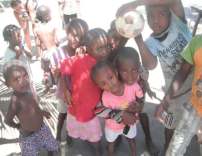

Midway in to my second week I was given the opportunity to get out in to the field, on the first of three turtle research field trips I would be a part of. This was my first experience of turtle survey work, which I found interesting and exciting. It was tough work, having to trek across long beaches, in 35 degree heat, but I found it to be a richly rewarding experience. The field work took me to some amazing places especially Nosy Hara Marine park. Getting out to the tranquil island paradise of Nosy Ho, with its pristine, crystal waters provided the epitome of natural beauty and what you would hope to expect from a marine protected area. Unfortunately like the study areas before it, they would still be littered with the shells and carcasses of turtles and sharks, which showed the level of work, education and alternative lifestyle opportunities required to help eradicate this problem in the future.
Working in the field is a unique experience. The Malagasy people are warm and welcoming, and when you are on camp duty, no matter what you may be doing, you will always have an audience of 10 children, intrigued by anything you may do and always ready to join in. If you don’t cook, then this is the perfect time to learn and there is no better setting than sitting outside, peeling potatoes with the view of a majestic sunset, and only the light of the moon and stars to help you.
Unfortunately, about two-thirds of the way through my internship, during the preparation for the big field trip, which I was extremely looking forward to being a part of, I came down with a virus that brought my stay with C3 to an early conclusion. It was devastating news to be told I should return toEngland, but with my health being most important, I decided it was in my best interest, and returned to England 3 weeks early. Illness aside, the project, like most things in life had its up’s and down’s, but was a richly rewarding time, and I would recommend it to anyone who wants to get field work experience, understand what its like to live in a different culture and see how conservation affects a community and vice versa. Madagascar is a beautiful country and a wonderful place to live and learn for 3 months.
I chose to intern with C3 in Madagascar because I wanted to gain more experience working in the conservation sector. Having studied both Conservation and International Development at university the community centred aspect of C3 really appealed to me. I chose the Madagascar program firstly because I couldn’t resist the opportunity to work in country with such rich flora and fauna and the internship looked as though it would provide me with a diverse experience.
I spent the first three weeks of my internship based in the office in Diego. Unfortunately the other interns were on a field trip and so I spent this time with the staff working on the entry and analysis of socio economic data collected using the SocMon Methodology. I was thrown in at the deep end, mid-way through the analysis and expected to work independantly. It was interesting to be able to participate in the analysis of the data and I gained a deep insight into the issues regarding the marine resource use and dependance of communities in North Eastern Madagascar. During this time I also attended lectures at the University of Antisiranna presented by C3 staff and had a go at teaching English. This was an experience I found surprisingly rewarding.
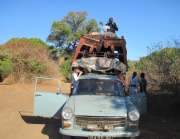
When the other interns returned I helped enter and analyse the data the biological data they collected on their field trip. Mid way through October I managed to finally get out into the field to carry out the monitoring of sea turtle nesting sites. I visited three different locations including the beautiful Nosy Hara Marine Park. I really enjoyed being in the field and learning about the issues surrounding turtle conservation, particularly seeing the degree of poaching that still occurs.
I spent the first few weeks of November preparing for a imminent field trip by reading about various biodiversity survey methodologies. These included seagrass watch, mangrove transect plots, Reefcheck methodologies as well as further reading on SocMon.
The field trip finally went ahead and I spent my last weeks in the field. We went with a small team of just four people to a village called Irodo. Watching the 4×4 drive away knowing that our only method of transport for 2 weeks was foot was a somewhat daunting experience! The trip as a whole was challenging. In 11 days we walked over 105km in 35 degree heat and carried out physically demanding surveys such as Mangrove biodiversity surveys and Seagrass mapping. Whilst in the field we lived alongside the community in a small wooden hut. This was both a once in a lifetime and humbling experience. I can safely safe I had never shared a shower with ducks and zebu before ! Whilst in Irodo we also carried out further socio economic research. This involved compiling an inventory of the various species local fishers caught. I particularly enjoyed interviewing fishermen, seeing their daily catch and learning about how and where they caught different species and how they get their catch to market.
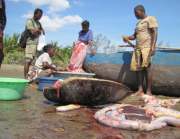
One of the most poignant memories I will take away is of walking along the beach one morning to find a group of fishermen cutting up a Green Sea Turtle they had caught in their net. It is only once I saw this that i felt i truly understood the difficulties in achieving a balance between marine conservation and sustainable livelihoods. I simply didnt realise how much meat and protein there is on a sea turtle, when people live such hard lives it is easy to understand why they don’t release an easy meal.
Overall I’ve had a very interesting experience interning with C3 in Madagascar. I’ve gained a lot of valuable knowledge; albeit not neccessarily in areas I anticipated to gain knowledge. I’ve been lucky enough to work alongside some amazing people, have seen some beautiful places and experienced true Madagascan culture. I’m leaving Madagascar with a greater understanding of the complexities of achieving both conservation and sustainable management in resource dependant rural communities. I have also gained a very useful insight into the positive and more challenging aspects of running a small NGO with limited resources in a developing country.
In 2011, I decided to seek international work experience relating to marine resource management in a developing country. Building on my Msc in Marine Science, Policy and Law and experience with working for the UK’s government marine sector, I wanted to gain first hand experience of the challenges facing resource management in a biodiverse, poverty stricken region through bottom up management approaches. In particular, I sought to develop an understanding of the socio-economic factors influencing resource management and development as well as an inspiring experience of working with some of the poorest rural communities on Earth. A global biodiversity hotspot and economically considered a Least Developed Country, Madagascar was the answer! and I chose to gain this experience through supporting the work and ethos of C3.
During my time at C3, I was trained in the highly recognised Socio-economic Monitoring Surveys for Coastal Managers of the Western Indian Ocean (SOCMON WIO); the universal Reef Check, Seagrass Watch and Mangrove Monitoring methodologies; turtle monitoring techniques as well as dugong and turtle key informant socio-economic analysis. In addition, I was trained in terrestrial primate ecological monitoring, focusing on the critically endangered blue eyed black lemur (Eulemur flavifrons). Using these skills, I participated in conducting a month long marine ecological and socio-economic assessment of the recently established Sahamalaza Radama Islands National Marine Park. Here, I was fortunate to work with the fantastic staff from the AEECL and the MNP and to live with remote communities throughout the region. With the vast majority of people living on less than a US$1 a day in rural areas (World Bank), my raw experience of living with these beautiful remote communities with no access to basic amenities highlighted to me the grave reality and concern of rural development and poverty across Madagascar (and indeed the rest of East Africa!).
Working in the final quarter of the year and at a time of transition for C3, I was involved in numerous field trips and also contributed to the writing and analysis of Sahamalaza Radama Islands report. Working in coastal regions throughout northern Madagascar, I leaned about the local fady’s and the role they play in resource management. I also independently built my knowledge of tropical marine biology as well as an understanding of agricultural production that drive the national economy (coffee, vanilla, sugar). Finally, I experienced the complexities of running a small NGO.
My experience of working in the diverse and economically challenging setting of Madagascar has strengthened my ambition and inspiration to work in the field of poverty alleviation and sustainable resource management.
I undertook a placement with C3 in order to get more experience of environmental issues in developing countries, gain an understanding of the socio-economic status of communities and develop skills in marine resource management and ecological surveying. Working with C3 enabled me to live within small isolated communities where I experienced and practiced these at first hand.
I learned and followed local cultures and traditions, and practiced the way of life of communities; from waking up before the sun, collecting water from a far river or well, washing in a river to cooking and cleaning. These were all governed by certain traditions or ‘fadys’ which tended to be good hygiene practices; such as collecting water upstream of a river and washing downstream.
The most memorable experience was working and living in the remote islands of the Sahamalaza-Radema archipelago that is a protected area. I learnt the value of socio-economic surveys as a tool to identify the level of threats of the environment, the effectiveness of management strategies and the status of livelihoods. I was particularly touched by the warm and welcoming people of Nosy Valiha and witnessing the issues they faced in regards to water supply and marine resource availability has been the most valuable and moving experience that I will take away with me in my career and life.
C3 is a small NGO which is currently developing in Madagascar. The work in the Madagascar office is run by Field Leaders who are educated in, and have experience in, marine science. They provide training in and conduct the field surveys. C3 Lead Scientists are based in their HQ
, as well as Antananarivo, Madagascar, who governs the projects, the science, publications and the conduct or co-ordination of data analysis.
C3 provided me with the opportunity to work in remote locations and with communities, and provided training in habitat and socio-economic surveying techniques. I was involved with C3’s socio-economic and turtle projects, as well as the Sahamalaza project which included both socio-economic and ecological methods. I was given responsibility for the Sahamalaza project and conducted data analysis and report writing which enabled me to independently strengthen my analytical and ecological skills.
I have put a lot into my work here and have therefore taken a lot out; independently and from C3. My Madagascar work and experience has been worthwhile for me, with the most valuable experience being able to live with the warm Malagasy communities in the Sahamalaza-Radema archipelago and understanding livelihoods and marine resource use in developing countries.
After earning my M.S. in biology I left graduate school having realized that I wouldn’t be satisfied with a career in research unless I could be part of turning the results into tangible management initiatives. I have also believed for some time that international conservation and development efforts have the greatest potential to change human behavior for the good of global biodiversity and species conservation. I went looking for an experience that would expose me to international field research and development, which is when I found C3.
After finding out I would be heading to the Philippines I had a four-week blur of last-minute planning, ticket purchasing, visas, packing, and over 20 hours of flying before I found myself at the field office in Salvacion, Busuanga. Salvacion is a small, quiet town where everyone knows everyone, and is a great way to get to know Filipino people and culture. Culture shock that it was, in the first few days I spent in Salvacion I already felt welcomed by everyone I met. That feeling never subsided during my entire three months I lived there; the community is filled with the warmest and most sincere people I’ve ever met, and I feel lucky that they were so eager to know us.
The first month of my internship was dedicated to developing and planning all of the projects that would become part of the C3 Philippines program. I found out when I arrived that I was the first intern to enter the program, and that meant that for every project planned for the Philippinesprogram, proposals had to be written and methods developed. My first week in Salvacion was spent reviewing the relevant literature about dugongs in thePhilippines, researching endangered species of Palawan, and studying for the health and safety and research tests. Over the course of the weeks that followed I also took part in developing seagrass survey protocols, designed a key informant questionnaire and developed the accompanying training, and started writing lectures to teach members of the local community English and job skills as part of our capacity building efforts.
It was in the second month of my internship that we started making trips out of the office to conduct our first interviews and seagrass surveys. The key informant interviews have been an amazing effort to be a part of. Not only do you get to see what life is like for the average fisherman in these small towns by walking through their neighborhoods and being invited into their homes, but some of them have been fishing in the same waters for over 60 years and have amazing insights into how their seas have changed in that time. I listened to one fisherman recount seeing herds of 20-30 dugongs in these same areas when he was a boy, and several more described witnessing the hunting and slaughter of dugongs, and even the experience of eating dugong meat. It was an amazing opportunity to be able to listen to these people tell their stories, and exciting to hear that people were actually still seeing dugongs in this part of the world.
The seagrass surveys were a fun opportunity to get out and do some fieldwork, and revealed to us first-hand the habitat degradation that happens in such a seemingly pristine place. Siltation and agricultural run-off appear to have left seagrass around here poor habitat for dugongs, and together with the coral rubble from dynamite fishing commonly seen on the reefs we could see the precarious position of marine ecosystems in the Philippines first-hand.
What has been most striking about the local people I’ve met during this experience is the interest they have in what C3 is trying to accomplish. Although I only had the chance to do teaching sessions with a few young people it seemed that among students, fishermen we interviewed, volunteers who helped us, and even the people we casually met in town that the majority of this community cares about what happens to their natural resources. People were happy that we had come to their hometown, proud of the beauty of where they live, and excited that we were interested in helping to preserve it. It was encouraging to learn that people in Salvacion are motivated to take care of their marine environment, and they seem ready and willing to make use of the information and resources C3 has to offer. I had the opportunity to see some of the most beautiful places I will ever see while in thePhilippines, but on leaving the program my most pressing thought is that I wish I had the chance to do more work with this community, and to see the work we started create change in the daily lives of its members.
